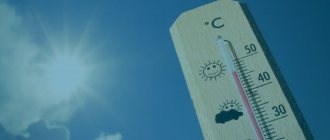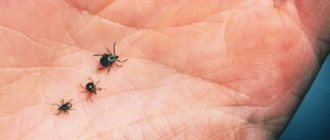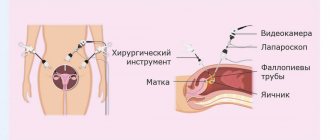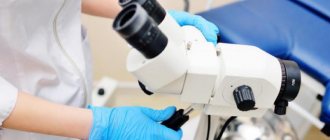Heatstroke is nothing more than overheating of the human body. It happens when the body does not cool down for a long time and cannot restore its normal temperature. Overheating may occur:
- in conditions of consistently hot weather;
- with prolonged exposure to the sun without a hat or in dark clothes;
- when drinking insufficient amounts of fluid;
- in a hot room.
Regardless of the cause of this condition or its precursors, the symptoms of heat stroke can always be recognized.
General information
Body temperature is the most important physiological constant of the body, the fluctuations of which normally in a healthy person should not exceed a certain range during the day (0.5–1°C).
The ability of the human body to maintain a stable body temperature (homeothermicity) allows us to ensure the constancy of the internal environment, metabolic rate and maintenance of its vital functions. Body temperature is determined by a large number of factors, the most significant of which are: environmental temperature, level of physical activity, dietary habits, emotional status, age, menstrual cycle, vegetative homeostasis, development of subcutaneous fat, clothing characteristics.
When heat balance is disturbed, hypo/hyperthermic states develop. Conditions of hyperthermia include hyperthermia itself - overheating of the body (hyperthermia), heat stroke, fever and hyperthermic reactions - malignant hyperthermia (drug-induced hyperthermia during/after general anesthesia), endocrine hyperthermia (sympathoadrenal crisis, thyrotoxicosis , pheochromocytoma ), serotonin syndrome , neuroleptic malignant syndrome. The main cardinal sign of hypothermia is an excess of body temperature above normal.
Hyperthermic conditions can develop under the influence of various factors:
- high air temperature with prolonged exposure to the body;
- excessive physical activity in hot/humid weather without adequate replacement of lost fluids;
- exposure of the head/body to direct sunlight;
- in children due to imperfection of the thermoregulation mechanism;
- in elderly people, people with heart failure , taking beta-blockers, tranquilizers, anticholinergics or diuretics;
- when the body is dehydrated against the background of decreased sweating due to narrowing of blood vessels, which impairs heat transfer;
- against the background of alcohol withdrawal syndrome ;
- with damage to the hypothalamus (centrogenic hyperthermia), due to cerebrovascular incidents;
- in case of poisoning with drugs with sympathomimetic/serotonin action;
- against the background of hormonal disorders ( hyperthyroidism , pheochromocytoma , hyperparathyroidism , hypothyroidism , hypoglycemia ).
The development of some hyperthermic conditions occurs against the background of preservation of thermoregulation mechanisms (for example, fever to a certain level), which develops as a protective reaction to the action of an infectious factor due to the influence of pyrogens of exogenous/endogenous origin on the center of the hypothalamus). At the same time, a pathological variant of fever with an inadequate rapid increase in body temperature above 41°C is considered as a hyperthermic syndrome, accompanied by disorders of microcirculation, metabolism and the development of dysfunction of various organs and systems.
The development of other hyperthermic conditions is due to a failure of the thermoregulation process that develops when the body is exposed to high environmental temperatures, as well as when heat transfer processes in the body are disrupted.
It is necessary to clearly identify the concepts of “hyperthermia syndrome” and fever. Despite the fact that both concepts are accompanied by an increase in body temperature, hyperthermia is the result of a disorder in the process of temperature regulation, and fever is the result of a normal thermoregulation system.
One of the extremely dangerous variants of exogenous hyperthermia is heat stroke , which is a pathological condition that develops with general overheating of the body caused by exposure to external thermal factors. The basis of heat stroke is a breakdown of thermoregulation mechanisms. ICD-10 hyperthermia code: T67.0. Developing overheating of the body during heat stroke is characterized by an increase in the temperature of the “core” of the body to 40°C and above, which is accompanied by severe respiratory/circulatory disorders with impaired consciousness (convulsions, delirium, coma).
Overheating of the body, depending on the duration of the thermal factor and the individual ability of the body to adapt, is conventionally divided into heat stress, heat exhaustion and heat stroke, which are essentially stages of a single pathological process characterized by impaired thermoregulation and deep disorders of homeostasis, leading to multiple organ failure, various severity, and in some cases to fatal consequences. Under the influence of a hyperthermic factor, a triad of adaptive emergency reactions is triggered:
- behavioral adaptation (“escape” from the heat factor);
- reduction in the activity of heat production processes/intensification of heat transfer processes;
- stress reaction.
This kind of reaction in most cases prevents the body from overheating, but in some cases these mechanisms turn out to be insufficient, which is accompanied by a breakdown of the mechanisms regulating heat exchange with the development of hyperthermia .
Overheating of the body develops gradually, first, superficial hyperthermia develops with increased sweating and loss of salts, which is a short-term compensated condition, and then, in the absence of help, against the background of dysfunction of the thermoregulation center in the hypothalamus, deep hyperthermia (state of decompensation) develops with pronounced disturbances in water and electrolyte balance , thickening/increasing blood viscosity, with an increase in urea and residual nitrogen, which leads to difficulty in the blood circulation process and the development of oxygen starvation.
It can occur both at high ambient temperatures against the background of limited fluid intake, and during prolonged physical stress against the background of a sharp decrease in heat transfer (sweating) and is characterized by a rapidly progressive depletion of adaptive thermoregulation mechanisms. It often develops in people with limited adaptive capabilities (children/adolescents; pregnant women; adults with chronic cardiovascular diseases; the elderly, as well as in people with a genetic predisposition to overheating - with a congenital absence of sweat glands, with cystic fibrosis ).
Heatstroke and sunstroke: how is heatstroke different from sunstroke?
Sunstroke is a special case (a type of heatstroke), caused by exposure to direct sunlight on the body, while heatstroke is a broader concept in which overheating of the body can occur in conditions of elevated temperature in a hot workshop, bathhouse/sauna, transport and etc. The most pathogenic effect of solar rays is the infrared part of solar radiation (radiation heat), which, unlike conditional/convection heat, simultaneously warms up all (superficial/deep) tissues of the body. Infrared radiation warms up the brain tissue with particular intensity, in the hypothalamus of which the neurons of the thermoregulation center are located.
Accordingly, sunstroke develops very quickly and is accompanied by a high risk of developing a serious condition with a fatal outcome.
Heat stroke in adults and children is a severe condition accompanied by profound disorders of homeostasis , which lead to varying degrees of severity of multiple organ failure, and in some cases to death (the mortality rate in severe forms reaches 20-30%). Death from heat stroke in most cases occurs as a result of the development of heart failure , acute progressive intoxication or respiratory arrest .
This life-threatening condition requires immediate qualified medical care.
Pathogenesis
The leading links in the pathogenesis of heat stroke include:
- disorders of water and electrolyte balance due to impaired sweating;
- dysfunction of the hypothalamic thermoregulation center.
The sequence of development of heat stroke includes the body's transition from a compensated state to a decompensated state. The body's acute-phase response to heat stress is expressed by the development of an inflammatory response of cytokines, interleukins and proteins. Developing heat stress caused by passive exposure to heat causes an increase in cardiac output and, accordingly, a redistribution of blood flow.
When a significant decrease in central venous pressure is achieved, the core temperature of the body begins to rapidly increase and this process becomes uncompensated. Disorders of thermoregulation are aggravated by pathophysiological processes, which contributes to the development of systemic inflammatory response syndrome. The direct cytotoxic effect of heat, together with inflammatory and coagulation reactions, causes damage to the endothelium of the vascular bed, which contributes to the development of microthrombosis .
Against this background, as well as due to hyperthermia platelet aggregation , their number decreases. Also, as a result of heat stroke, due to the high sensitivity of megakaryocytes to high temperatures, the process of platelet release from the bone marrow is suppressed. A reduction in cerebral blood flow, cerebral hypoxia/edema, and electrolyte disturbances lead to the development of convulsive syndrome, which often occurs in persons with limited adaptive capabilities (old people, children). As a result of the combined effect of high temperature on the body and circulatory disorders, multiple organ failure , manifesting itself in the form of heat stroke.
The pathogenesis of sunstroke is a combination of sunstroke itself and the mechanisms of hyperthermia. The leading link is damage to the central nervous system, which develops as a result of rapidly progressing arterial hyperemia of the brain due to overheating under the influence of the infrared spectrum of solar radiation. In this regard, a large amount of biologically active substances is formed in the brain tissues: acetylcholine , adenosine , kinins , etc. Prolonged/strong exposure to heat and biologically active substances that dilate the arterioles of the brain helps to reduce the neuro/myogenic tone of the vascular walls with the development of arterial hyperemia in the neuro /myo-paralytic type.
In turn, arterial hyperemia leads to a sharp increase in blood supply to the brain, activation of the process of lymph formation and overflow of the lymphatic vessels, which leads to compression of the brain and venous, rapidly progressing cerebral hyperemia . Venous hyperemia, in turn, causes brain hypoxia and swelling with the appearance of small focal hemorrhages in the brain tissue. As a result, the victim develops focal symptoms - neurogenic disorders of movement, sensitivity, autonomic functions, metabolic disorders, plastic processes and energy supply of brain neurons develop. Against this background, disorders of the mechanisms of thermoregulation, blood circulation, and respiration increase, with the development of multiple organ failure.
A diagram of the pathogenesis of heat stroke is presented below.
Classification
The classification of heat stroke is based on several factors, according to which the following are distinguished.
Etiologically: heat and sunstroke.
According to the specifics of occurrence:
- “Classic” heat stroke, which is not associated with physical stress, but develops under the influence of high ambient temperatures. Typical for children/teenagers and elderly people with chronic diseases.
- Heatstroke caused by excessive physical exertion against a background of high ambient temperatures. Occurs mainly in young people during intense physical activity in conditions of elevated temperature.
According to the presence of complications: uncomplicated and complicated (severe dehydration , convulsions , hypotension , stupor , coma ).
Below is a description of “classic” heat stroke and heat stroke associated with physical activity.
Helping a child with a fever
Typically, in the first 1-2 days of an acute viral infection, fevers occur on average 3-4 times a day, in the next 1-2 days - 2 times a day. The general febrile period most often lasts 2-3 days, but can be “normal” up to 5-7 days with some types of viral infections (influenza, adenoviral, enteroviral fevers). In any case, a child with a fever should be examined by a doctor.
Physical and medicinal methods are used to combat elevated body temperature during fever.
Causes
The main causes of heat stroke include:
- Impact on the human body of high ambient temperature against a background of high humidity.
- Wearing clothing that does not correspond to temperature indicators (warm/synthetic), which impedes the process of heat transfer.
- Exposure to direct sunlight, especially during periods of high multispectral solar insolation.
- Alcohol abuse (alcohol poisoning, alcohol withdrawal syndrome), accompanied by disruption of thermoregulation processes.
- Increased physical activity, especially in the open sun.
- Taking certain medications (antipsychotics, neuroleptics, antihistamines, beta blockers, tricyclic antidepressants, diuretics, etc.).
Factors that contribute to overheating of the body include a state of increased psycho-emotional stress and large body weight, hormonal disorders (thyroid pathology, diabetes mellitus ), pregnancy , mental illness, and insufficient drinking regimen.
Precautionary measures
To avoid unwanted effects from the sun and heat, you need to protect your head. When going outside, you should wear a hat. On the street you should avoid sunny places, being mostly in the shade. Without any special reason, in very hot weather, you should not leave the house or do so before 12 o’clock and after 16-17 o’clock. When going outside, you need to take still water and wet wipes for your face with you. On the beach - use sunscreen, do not be in direct sunlight, do not drink alcohol or fatty foods.
A person often feels ill in the hot summer on crowded buses or minibuses. Here you can use this life hack: buy a bottle of water from the refrigerator in advance and, while in transport, apply it to the side of your neck (to the jugular vein), so the blood will enter the brain cooled. This should be done without having chronic throat diseases.
Symptoms
Symptoms of heat stroke in adults are characterized by rapid progression and acute onset. There are three forms of severity of heat stroke:
- Light form. Characterized by headache , adynamia , nausea . Rapid breathing and tachycardia . The skin is unchanged. The temperature is mostly normal, less often low-grade. With rapid relief of the factor affecting the body and creation of comfortable conditions for the victim, the signs of hyperthermia regress.
- Medium severity. Characterized by severe headache accompanied by nausea and vomiting. There is severe adynamia , stupor , uncoordinated movements, and short-term fainting is possible. Tachycardia , rapid breathing, hyperthermia , increased sweating. Increase in body temperature to 39-40°C. With timely treatment measures, body functions in adults are normalized.
- Severe form. Symptoms of heat stroke are extremely pronounced: acute onset, signs of overheating of the body quickly increase, consciousness is often confused ( stupor / coma ). Extreme exhaustion of the victim’s body is noted, tonic/clonic convulsions and psychomotor agitation (hallucinations, delusions) are present. Breathing is shallow, frequent and often arrhythmic. Heart sounds are muffled. The pulse is threadlike with a frequency of 120-140 beats/minute. The skin is dry and hot to the touch. Body temperature rises to 41-42°C or higher. Anuria develops . In the blood - urea and residual nitrogen increase, the amount of chlorides sharply decreases. The ECG shows signs of severe diffuse myocardial damage.
First aid for heat or sunstroke
The most important thing is to place the patient in a colder place as soon as possible in order to quickly cool the body. The ideal option is a bath with a water temperature of 18-20°C, but it can also be the usual wetting of the affected person’s skin with water (also at room temperature), and gentle fanning (the air should be warm). If possible, put ice on your head and wipe your armpits and groin area with alcohol. It is important to know that at the moment of cooling a person may show signs of sudden mental motor agitation.
If heat or sunstroke occurs outside, the person must be immediately placed in the shade, freed from clothing as much as possible so that the skin is cooled, and laid so that the legs are higher than the head. If a person is conscious, then it is useful to drink water in small sips; the water should be at room temperature.
If the victim has lost consciousness, he must be taken to a medical facility for subsequent examination and treatment.
Tests and diagnostics
Heatstroke requires quick emergency action from the emergency physician, so in practice instrumental/laboratory tests are not performed. The diagnosis is made at the prehospital stage based on an assessment of the clinical picture, temperature measurement, physical data (tachycardia, decreased blood pressure, increased breathing) and, as a rule, does not present any difficulties. Tests are prescribed for moderate/severe condition of the victim after first aid has been provided and the patient has been hospitalized in a hospital. A clinical/biochemical blood and urine test and a coagulogram are prescribed.
Signs of Heat Stroke
If heat exhaustion cannot be recognized, even more dangerous symptoms appear that characterize heat stroke:
- temperature rise to 39-40 0C or more;
- difficulty breathing;
- severe vomiting;
- ari nervous activity.
This condition can cause serious damage to organs (especially the heart and kidneys). Help must be provided quickly - and it is advisable not to miss thermal exhaustion, in which it is much easier to help a person.
In children
Heat stroke in a child is quite common. In newborns, on days 3-5, transient hyperthermia , manifested by a sudden increase in temperature to 38-39°C, which disappears on its own. Transient hypothermia is caused by the immaturity of thermoregulation processes and develops as a process of adaptation during the transition to the postnatal life of the child. It can be caused by dehydration of the child, prematurity, birth injuries, overheating of the child, etc.
Especially often, children develop hyperthermic syndrome against the background of various infectious diseases ( pneumonia , influenza , sepsis ), infectious/toxic-allergic conditions, dehydration, respiratory distress syndrome, due to birth injuries.
Hyperthermic syndrome in children is accompanied by rapidly increasing weakness, pale skin, adynamia, chills, and refusal to eat and drink. In the absence of timely assistance, speech/motor agitation, convulsions , hallucinations , frequent shallow breathing, drop in blood pressure , tachycardia , and peripheral vasospasm appear. Loss of consciousness and asphyxia, leading to death, are often observed.
When diagnosing children with fever, it is necessary to distinguish between “white” and “red” hyperthermia, which is due to the difference in prognosis and approach to treatment.
"Red" hyperthermia. It is characterized by the correspondence of the heat transfer process to the heat production process and is prognostically more favorable. With this form, the skin is moist, hot, moderately hyperemic, the limbs are warm; increased respiration/pulse corresponds to increased temperature, the child’s behavior is not changed.
"White" hyperthermia. Characterized by a discrepancy between heat production and heat transfer. It manifests itself as pallor (marbling) of the skin with a cyanotic tint to the lips, nail beds, and a positive “white spot” symptom. of breath , excessive tachycardia are characteristic , the child’s behavior is disturbed (lethargy, indifference), delirium and convulsions are possible. White hyperthermia is a prognostically unfavorable form, and the effect of antipyretics in this form of hyperthermia is insufficient.
Emergency care for hyperthermic syndrome in children is carried out depending on the form of hyperthermia.
For “red” hyperthermia it is necessary:
- Expose (expose) the child as much as possible, ensuring sufficient access to fresh air.
- Carry out physical cooling methods: cold on the area of large vessels, a wet cold bandage on the forehead, blowing with a fan, water-vinegar rubdowns.
- Drink plenty of fluids, exceeding the age norm of fluid by 0.5-1 l/day.
- Prescription orally/rectally Ibuprofen , Paracetamol .
In case of “white” hyperthermia, cold wraps are strictly contraindicated, as this will aggravate the microcirculation disorder. To increase heat transfer/improve peripheral blood circulation and vascular microcirculation, a child must be prescribed vasodilators simultaneously with taking antipyretics: Papaverine / No-shpa together with Analgin , Eufilin , Pipolfen nicotinic acid solution . If there is no effect, prescribe steroids: Hydrocortisone , Prednisolone . For severe agitation, anxiety, and convulsions, Seduxen / Sodium Oxybutyrate .
All children with hyperthermic syndrome and intractable “white” hyperthermia should be hospitalized immediately after emergency care. Timely emergency care for hyperthermia is especially important for children at “risk” for the development of complications, which include children under 6 months; pathology of the central nervous system; history of febrile seizures, lung/heart disease.
How to help yourself with sunstroke and heatstroke
- If possible, move to a cool room (or at least in the shade).
- If you can enter the house, remove excess clothing and lie down.
- Drink some water. It can be slightly salted (0.5 teaspoon of salt per 0.5 liter of water).
- Wrap your body in a cool, damp towel, but do not submerge it in ice water.
- At the first signs of loss of consciousness, you can inhale the vapors of a 10 percent ammonia solution (ammonia).
- If you feel nauseous or dizzy, call an ambulance.
- In severe cases of heatstroke, immediate hospitalization is strictly necessary.
Diet
There is no special diet, however, to reduce the risk of heat constriction in the summer, it is recommended to correct the diet: increasing the proportion of vegetables and fruits, fermented milk products with a decreasing proportion of fatty meat foods, pickles, and smoked products. Among protein products, preference should be given to river/sea fish, various seafood, chicken/quail eggs, and low-fat cottage cheese.
Drinking a sufficient amount of liquid (green/herbal tea, fruit juices, still mineral water, kvass), limiting the intake of alcohol-containing drinks, strong coffee.
Prevention
Prevention of hyperthermic conditions consists of preventing the possibility of exposure to the thermal factor on the body and/or reducing the duration/degree of its impact and comes down to following a number of rules:
- Avoid prolonged exposure to high temperatures and exposure to direct sunlight, which is achieved by air-conditioning the premises, spraying moisture, taking a cool shower, staying under awnings, awnings, and wearing a light headdress.
- Wear light summer clothes made of well-ventilated natural fabrics (linen, cotton, silk) and loose fit.
- Being outdoors in the summer during cool mornings/evenings.
- Compliance with a rational water-salt regime (fractional consumption of chilled liquid of at least 2 liters per day of liquid, preferably still mineral water containing magnesium, sodium, potassium salts; natural bread kvass; compote, fruit juices).
- Correction of the diet during the hot period towards increasing the consumption of plant foods (vegetables/fruits) and reducing the consumption of fats, salty and smoked foods.
- Avoid intense workouts in hot weather/in direct sunlight.
- During hot periods, avoid the use of alcoholic beverages and psychotropic drugs that affect thermoregulation processes.
- Do not leave children in hot weather without adult supervision or in a closed car.
How to help? First aid
Before the ambulance arrives, provide first aid to the victim.
The first thing to do is to move the child to a cool place where the air temperature is ideally 18-20 degrees.
Then undress the child as much as possible. If the baby is conscious, give him water, saline solutions, compotes, etc.
If vomiting occurs, you need to put the child on his side so that the vomit does not reflux, and give him small amounts of water, that is, every 5-10 minutes.
If the child is unconscious, then under no circumstances should you give him something to drink!
What to do:
- Place the baby on a flat surface and raise his feet on a bolster, pillow, or the like. Thanks to this, the blood flow is redistributed, thus we protect vital organs - the heart, brain and kidneys.
- Moisten the child's face with cool water, then place a cold compress on the forehead, groin area and under the arms. Fan the child with frequent movements, turn on the fan or air conditioner.
- You can cover the child with a sheet soaked in cool water and wipe him with it.
The body needs to be cooled as much as possible. We call an ambulance if the child is unconscious and convulsions begin. If the child is unconscious and has no breathing or heartbeat, immediately begin cardiopulmonary resuscitation until the ambulance arrives.
List of sources
- Litvitsky P. F. Pathophysiology. M. GEOTAR-Media. 2006. T. 1. P. 201-244.
- Guide to emergency medical care // Ed. S.F. Bagnenko, A.L. Vertkina, A.G. Miroshnichenko, M.Sh. Shubutia - M.: GEOTARMEDIA, 2007. - 816 p.
- Litvitsky P.F. Disturbances in the body’s thermal balance: hyperthermia, hyperthermic reactions, heat stroke, sunstroke // Issues of modern pediatrics. - 2010. - T. 9. - No. 1.
- Pikovsky V. Yu., Kozlov A. V. General overheating (heat stroke) / Medical Bulletin. - 2007. - No. 3.
- Chernysheva O.E., Yulish E.I., Krivushchev B.I., Soroka Yu.A. Hyperthermic syndrome in children: developmental mechanisms, course features, methods of therapy // Journal “Child's Health”. 2012. - p. 61-64.









